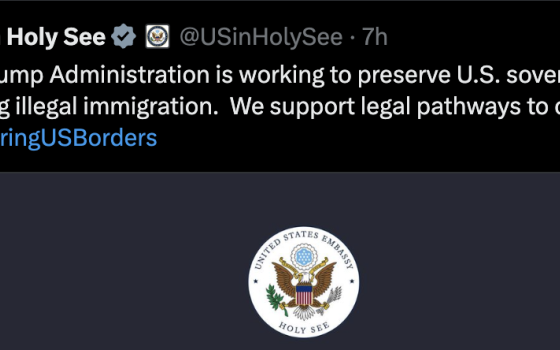Authors hope to provide insights to financial institutions that address poverty
PORTFOLIOS OF THE POOR:HOW THE WORLD’S POOR LIVE ON $2 A DAY
By Daryl Collins, Jonathan Morduch, Stuart Rutherford and Orlanda Ruthven
Published by Princeton University Press, $19.95
Want to know how the poor live? Read their diaries. Subir and Mumtaz live with their five children in Dhaka, Bangladesh. With the help of odd jobs and inconsistent employment they aim at making $1 a day per person. Even during the good times they rarely make that much and in bad times they typically earn less than half. Eating three square meals every day is a blessing, but it is not unusual to eat only twice and sometimes once. Given the unpredictability of their finances, carefully managing any money that they are able to acquire is a constant concern.
The daily struggles of Subir and Mumtaz are just one story among many highlighted in Portfolios of the Poor: How the World’s Poor Live on $2 a Day. In this book the authors analyze about 300 “financial diaries” from households in India, Bangladesh, and South Africa. While a study of “financial diaries” has the making of a dry sounding book, this study provides some interesting insights into the ingenuity of the poor as they struggle to scrape together a reliable livelihood and provide for the needs of their families. Unlike studies that focus on the structural causes of poverty, this book focuses specifically on how the world’s poorest earn and manage their money on a day-to-day basis.
 Providing for basic needs like food, clothing and shelter is just one obstacle confronting them. Dealing with unexpected expenses compounds their financial difficulties. In South Africa, for instance, social custom often requires elaborate funeral ceremonies for deceased loved ones. It is not unusual for such ceremonies, which are often stretched out over weeks, to cost $1,500 or more. For a family making only $200 a month, such an expense would seem to be an unbearable financial stress. While difficult, the authors note the savvy financial character of many of the poor who confront this type of obligation. They rely on a wide range of preexisting, although typically rudimentary, financial institutions that help them secure funding for the funeral ceremony. These typically include community and personal savings accounts and high-interest loans.
Providing for basic needs like food, clothing and shelter is just one obstacle confronting them. Dealing with unexpected expenses compounds their financial difficulties. In South Africa, for instance, social custom often requires elaborate funeral ceremonies for deceased loved ones. It is not unusual for such ceremonies, which are often stretched out over weeks, to cost $1,500 or more. For a family making only $200 a month, such an expense would seem to be an unbearable financial stress. While difficult, the authors note the savvy financial character of many of the poor who confront this type of obligation. They rely on a wide range of preexisting, although typically rudimentary, financial institutions that help them secure funding for the funeral ceremony. These typically include community and personal savings accounts and high-interest loans.
Unexpected health crises also take their toll on the financial stability of families in the developing world. Typically without access to any reliable health insurance system and even then only able to make enough money to scrape by, an injury or prolonged sickness often has a devastating financial impact on the family. For this reason, the authors stress the importance of developing reliable insurance systems that will provide protections for the poor and minimize risk in the process. However important the individual stories accounting for the daily struggles confronting those with little or no money, the authors have a much larger objective in mind. This book is not intended merely as an exposé on the lives of the desperately poor.
Rather, it is the authors’ contention that understanding the financial lives of the poor will provide insights into the types of financial institutions that can better equip the poor to cope with their daily struggles. The authors of Portfolios of the Poor consistently emphasize how the creation of locally-based financial institutions can assist in the economic decision-making of the average person and in doing so facilitate wise money management over the course of a lifetime. This point is made early on when they write, “If poor households enjoyed assured access to a handful of better financial tools, their chances of improving their lives would surely be much higher.” It is not surprising then that in their penultimate chapter, the authors specifically address the important role that microfinance institutions can play in this is process. Using insights garnered from their analysis of the poor’s financial diaries, they make preliminary suggestions regarding how microfinancing can be improved upon in the coming years. This larger focus also helps to explain their emphasis on the development of insurance systems and other financial structures that will help to protect the poor in response to health crises and other unpredictable expenses.
While Portfolios of the Poor provides an informative perspective on the daily obstacles that the extremely poor face and thus can be of value to the casual reader, it would likely have little appeal for the average reader. Nor would they seem to be the book’s intended audience. The authors’ primary targets are people who are directly involved in the development and implementation of financial institutions aimed at helping the poor. Their conclusions highlight the ways in which financial tools can be improved upon so as to better respond to the needs of the people who are taking advantage of these services. The in-depth study of financial diaries that focus on the day-to-day economic decision-making of the average person living in Bangladesh, South Africa and India provides insights into how such improvements can be effectively made.
[Todd Scribner works at the U.S. Conference of Catholic Bishops in the Department of Migration and Refugee Services.]

